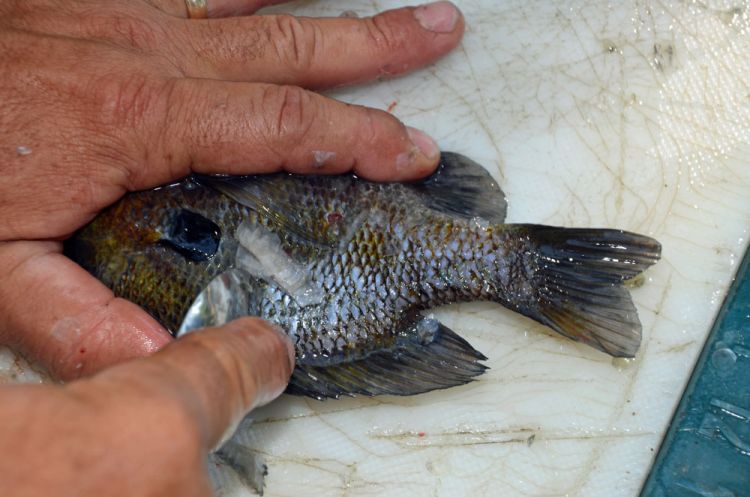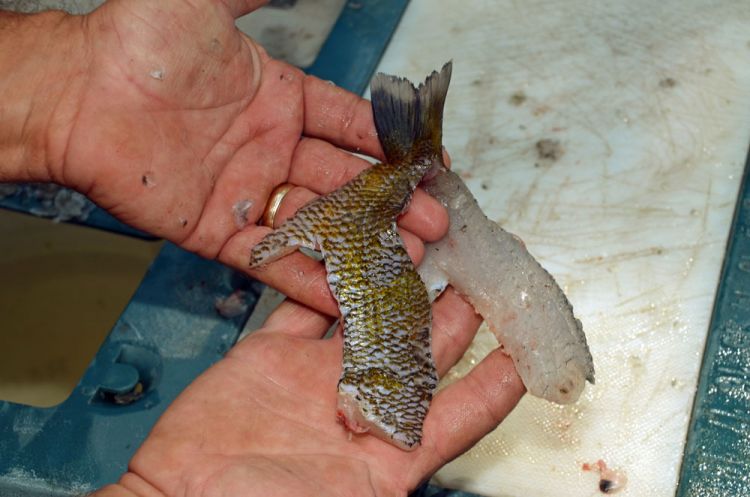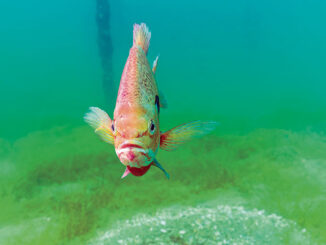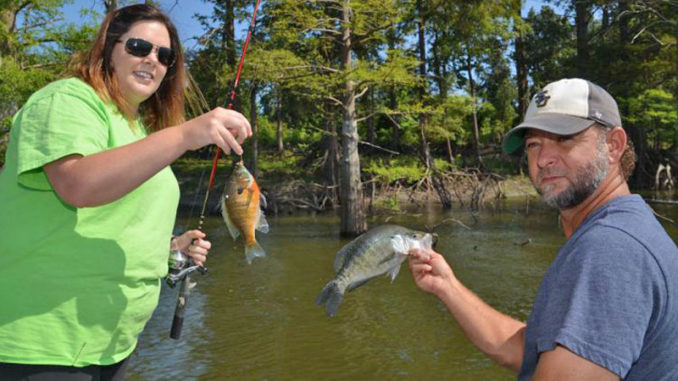
“I am a bream-eating specialist,” laughed Padra Francois. “That’s all I prefer. They aren’t too fishy; not too strong.”
“We fillet a few for the kids (Alli, 5 and Luke, 9), but everything else is on the bone — deheaded, scaled and gutted. I think they taste better on the bone. And I like to eat the fins and tails, too.”
“It’s way more convenient to fillet them though,” expanded Gene Francois. “Cleaning them on the bone is slower; it takes more time.”
Slowest, but showiest of all is a family specialty called Francois Butterflies.
Gene shared both ways he cleans bream for his family.
Traditional cleaning
This is old-school, the way folks did it for a couple hundred years until filleting became vogue in the 1970s. Some people, like Padra, still prefer the method. The intact skin provides extra taste and this method keeps the most fins in place to be fried to crunchy delightfulness.
An added benefit is that intact backbone steams moisture into the meat during frying, providing a moist bite. The disadvantage to the style is the number of bones that must be picked around to get at the succulent white meat.
1.) Using a spoon as a tool, scrape all the scales from the body of the fish and rinse it thoroughly.
2.) Cut the head off and discard it. Make the cut at a sharp angle to preserve as much of the meat in the nape of the ‘neck’ as possible.
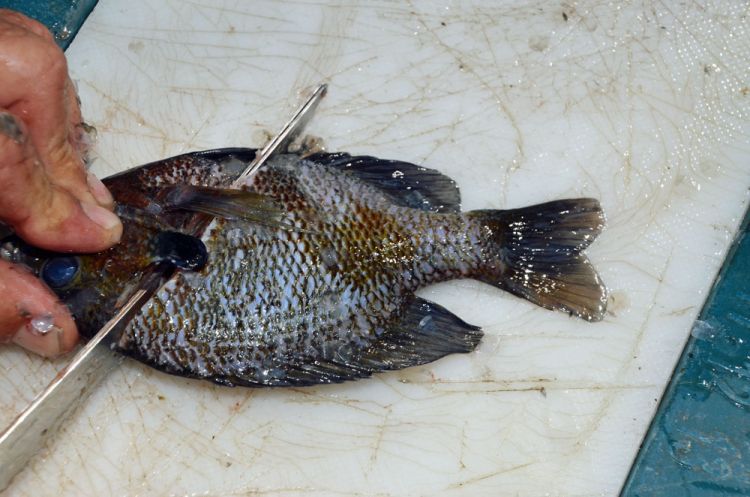 3.) Use a finger to scrape out and discard any viscera remaining in the body cavity. Rinse the fish under running water. It is now ready for breading and frying.
3.) Use a finger to scrape out and discard any viscera remaining in the body cavity. Rinse the fish under running water. It is now ready for breading and frying.
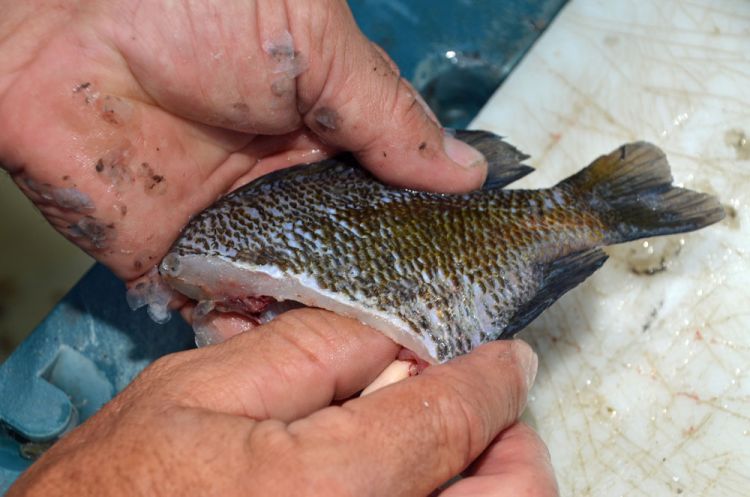 Francois butterflies
Francois butterflies
This is probably one of the coolest bream cleaning methods around. It gets rid of all the pesky small bones of the fish, but keeps its flavorful skin and highly desirable tail fin intact.
This is the cleaning method used by Gene for prepping fish for the couple’s children. The downside (a small one unless you have a hundred fish to clean) is that it’s slower than traditional cleaning or filleting.
1.) Scale the body of the fish by using a tablespoon and then rinse the fish to remove the loose scales.
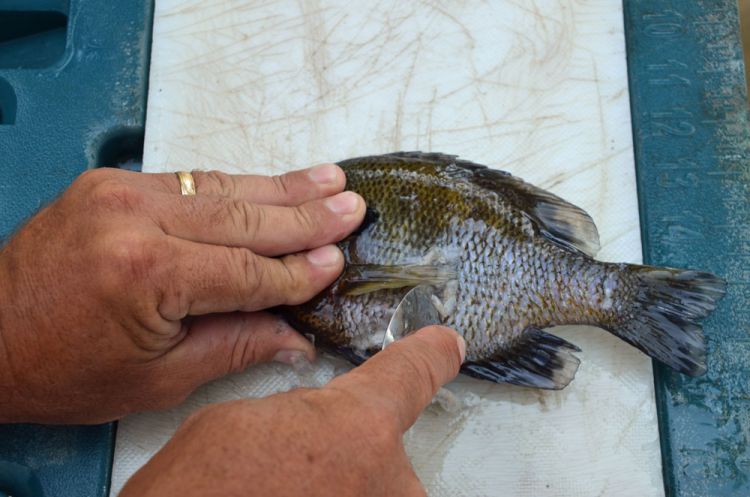 2.) On one side behind the head, cut down to – but not through – the backbone of the fish.
2.) On one side behind the head, cut down to – but not through – the backbone of the fish.
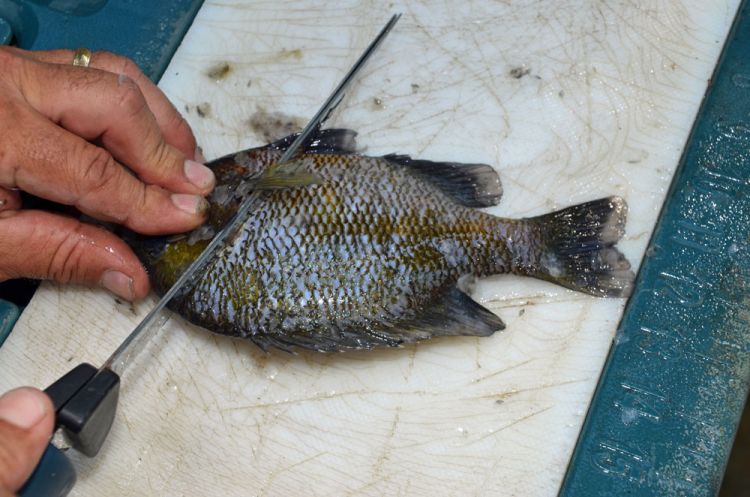 3.) Turn the knife blade with its cutting edge toward the tail of the fish and loosen the fillet from the backbone by cutting closely along the bone. Do not cut through the skin attaching the fillet to the tail. This is important.
3.) Turn the knife blade with its cutting edge toward the tail of the fish and loosen the fillet from the backbone by cutting closely along the bone. Do not cut through the skin attaching the fillet to the tail. This is important.
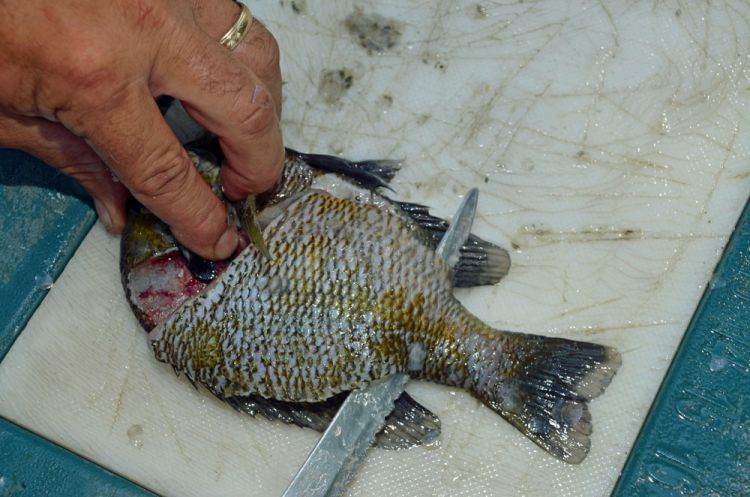 4.) With the first fillet still attached to the tail, turn the fish over and repeat the process on the second side.
4.) With the first fillet still attached to the tail, turn the fish over and repeat the process on the second side.
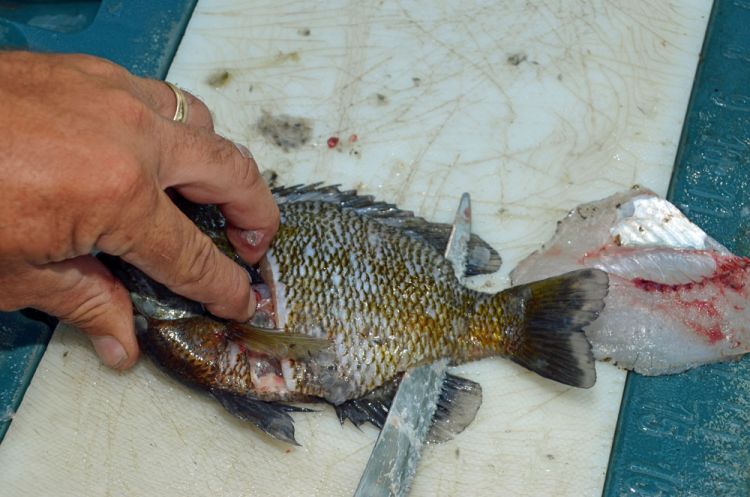 5.) Cut through the backbone just ahead of the tail with the fillets still attached to the tail.
5.) Cut through the backbone just ahead of the tail with the fillets still attached to the tail.
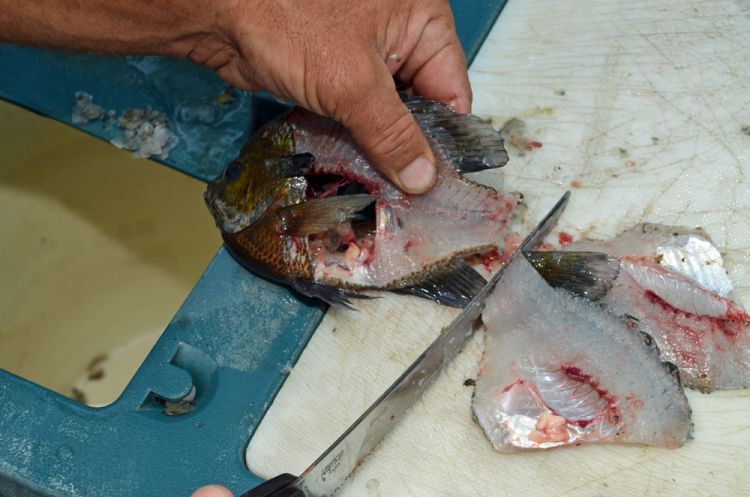 6.) Remove the rib cage from each fillet with a knife.
6.) Remove the rib cage from each fillet with a knife.
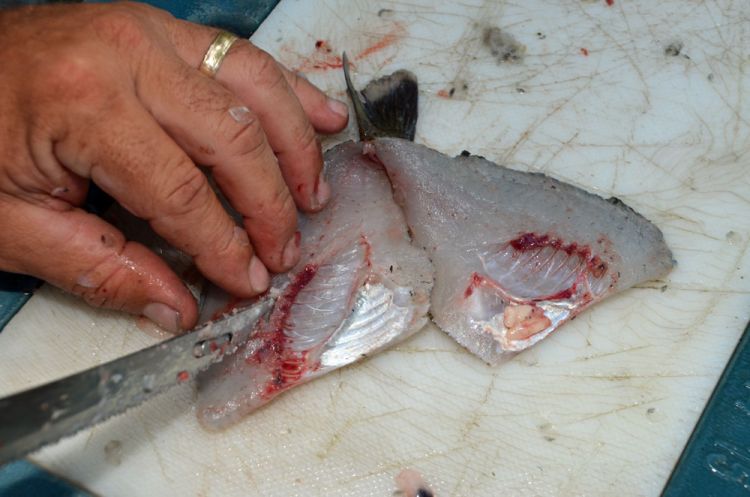 7.) Rinse thoroughly, and the Francois butterfly is now ready for frying.
7.) Rinse thoroughly, and the Francois butterfly is now ready for frying.
